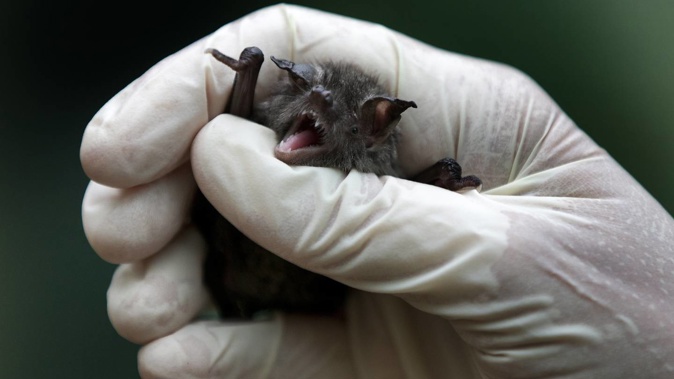
Scientists have discovered a plethora of viruses within Aotearoa’s tiny native bats, including what could be the “shortest” known coronavirus – but they stress there’s no big risk of them jumping to humans.
Rather, their new findings confirm our two endangered species happen to be important viral reservoirs - much like their winged counterparts overseas - despite having lived in isolation for millions of years.
While most of us are unlikely to encounter them, our bats happen to be this country’s only endemic land mammals – and among the most peculiar species inhabiting our wilderness.
The lesser short-tailed bat exists today in two sub-species - one considered nationally endangered and the other declining - but the greater short-tailed bat hasn’t been seen since 1967 and is probably now extinct.
Long-tailed bats are even smaller, weighing just between eight to 11 grams, and, while found throughout our mainland, are critically endangered.
Otago University evolutionary virologist Associate Professor Jemma Geoghegan said both species had fascinating life histories.
The ancient lesser-short tailed bat, today living in just a few locations, had been isolation for so long that it’d developed some “unique behaviours” - and were just one of two bats in the world known to engage in what’s called “lek” breeding.
Scientists have been amazed to watch how males find a suitable tree cavity, sing a tune - and sometimes pee on themselves to smell good.
/cloudfront-ap-southeast-2.images.arcpublishing.com/nzme/ZWNMRJ2PYLAKYBQDJ6XR573GG4.jpg)
The Rangataua Forest, near Ōhakune, has the largest population of pekapeka (short tailed bats) in New Zealand. Photo / Colin O'Donnel, DOC
While Geoghegan said they’d long been understood to carry many viruses, next-generation genome sequencing technology – like that used by ESR in the Covid-19 pandemic - offered the chance to take a closer look.
From bat guano (faeces) collected by Department of Conservation rangers from around the country, Otago University researcher Stephanie Waller, Geoghegan and others extracted genetic material to later analyse for viruses.
“We found lots of new viruses, particularly in the long-tailed bats,” Geoghegan said.
“We also found coronaviruses in long-tailed bats that had previously been found the lesser short-tailed bats - meaning that these viruses have jumped between these hosts over the two million-odd years they’ve been co-habiting here.”
That so many were discovered within the bats wasn’t surprising, given viruses have been infecting animals for hundreds of millions of years, and that bats were well known to carry a remarkable diversity of them.
Among those identified were some coronaviruses, stemming from the same wider family of RNA-related viruses that include SARS, MERS and the Sars-CoV-2 virus that causes Covid-19.
“Some short sequences of these viruses had been found before, but we were able to recover their full genomes,” Geoghegan said.
/cloudfront-ap-southeast-2.images.arcpublishing.com/nzme/HVYH5FCRP2KAHFL7SSJKJXU6GU.jpg)
Otago University virologist Associate Professor Jemma Geoghegan. Photo / Supplied
“By doing so, we found that one of the viruses had a large deletion in its genome - and we think that this represents the shortest known coronavirus to date.”
In a separate new study, also released ahead of peer-review, researchers also described two new lineages of alpha-coronaviruses found within the two species, with infection prevalence in long-tailed bats reaching 60 per cent.
Geoghegan said bats were a natural reservoir of many coronaviruses worldwide – new ones have also just been found within lesser horseshoe bats in the UK – and the new studies only showed that New Zealand wasn’t an exception.
“I think what these findings tell us is that bats have lots of viruses, even if they have been relatively isolated for millions of years,” she said.
“This research tells us a lot about virus evolution, but it also helps us to establish a baseline of what is present in New Zealand’s host species.”
And while many other mammals were prone to coronavirus infections, there was nothing to indicate that these viruses pose a risk to humans or other animals, she said.
“Ultimately, having this baseline information is helpful for managing the health of the bats, and to enable us to quickly respond to any future emerging diseases.”
Take your Radio, Podcasts and Music with you









